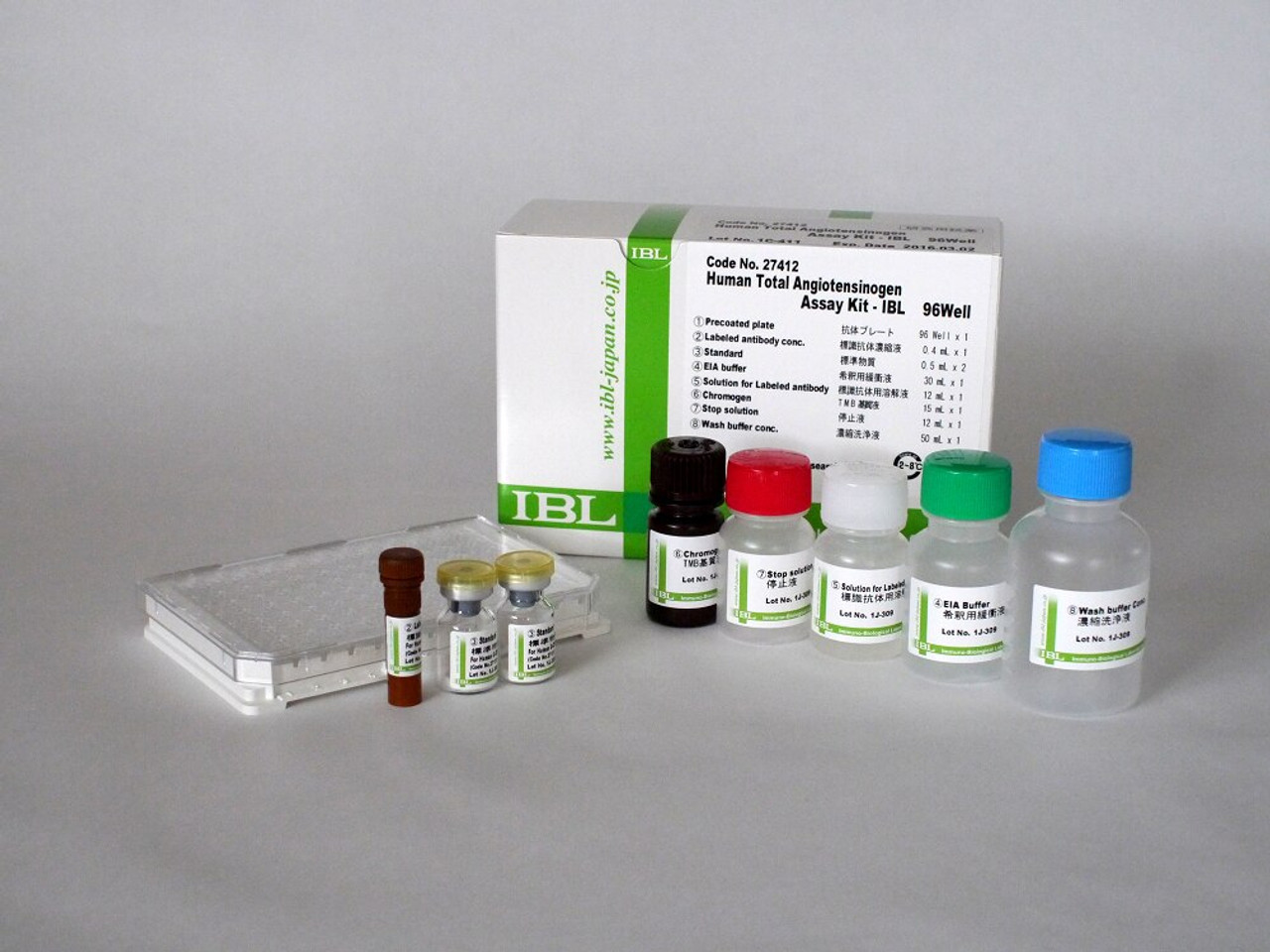Publication Spotlight: Zilebesiran, an RNA Interference Therapeutic Agent for Hypertension
Sep 3rd 2024

The IBL-America Enzyme-linked Immunosorbent Assay (ELISA) for Angiotensinogen (Total) was used in this study.
Akshay S. Desai, M.D., M.P.H., David J. Webb, M.D., D.Sc., Jorg Taubel, M.D., Sarah Casey, M.B., Ch.B., Yansong Cheng, Ph.D., Gabriel J. Robbie, Ph.D., Don Foster, M.S., Stephen A. Huang, M.D., Sean Rhyee, M.D., M.P.H., Marianne T. Sweetser, M.D., Ph.D., and George L. Bakris, M.D.
Published July 19, 2023 | N Engl J Med 2023;389:228-238 | DOI: 10.1056/NEJMoa2208391 | VOL. 389 NO. 3
Zilebesiran, an RNA Interference Therapeutic Agent for Hypertension
Abstract
Background
Angiotensinogen is the sole precursor of angiotensin peptides and has a key role in the pathogenesis of hypertension. Zilebesiran, an investigational RNA interference therapeutic agent with a prolonged duration of action, inhibits hepatic angiotensinogen synthesis.
Methods
In this phase 1 study, patients with hypertension were randomly assigned in a 2:1 ratio to receive either a single ascending subcutaneous dose of zilebesiran (10, 25, 50, 100, 200, 400, or 800 mg) or placebo and were followed for 24 weeks (Part A). Part B assessed the effect of the 800-mg dose of zilebesiran on blood pressure under low- or high-salt diet conditions, and Part E the effect of that dose when coadministered with irbesartan. End points included safety, pharmacokinetic and pharmacodynamic characteristics, and the change from baseline in systolic and diastolic blood pressure, as measured by 24-hour ambulatory blood-pressure monitoring.
Results
Of 107 patients enrolled, 5 had mild, transient injection-site reactions. There were no reports of hypotension, hyperkalemia, or worsening of renal function resulting in medical intervention. In Part A, patients receiving zilebesiran had decreases in serum angiotensinogen levels that were correlated with the administered dose (r=−0.56 at week 8; 95% confidence interval, −0.69 to −0.39). Single doses of zilebesiran (≥200 mg) were associated with decreases in systolic blood pressure (>10 mm Hg) and diastolic blood pressure (>5 mm Hg) by week 8; these changes were consistent throughout the diurnal cycle and were sustained at 24 weeks. Results from Parts B and E were consistent with attenuation of the effect on blood pressure by a high-salt diet and with an augmented effect through coadministration with irbesartan, respectively.
Conclusions
Dose-dependent decreases in serum angiotensinogen levels and 24-hour ambulatory blood pressure were sustained for up to 24 weeks after a single subcutaneous dose of zilebesiran of 200 mg or more; mild injection-site reactions were observed. (Funded by Alnylam Pharmaceuticals; ClinicalTrials.gov number, NCT03934307; EudraCT number, 2019-000129-39.)

